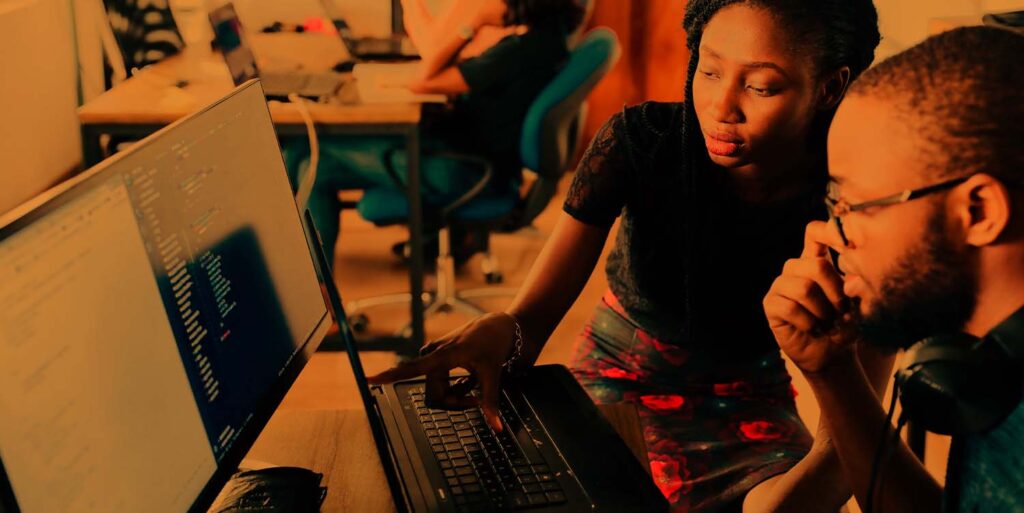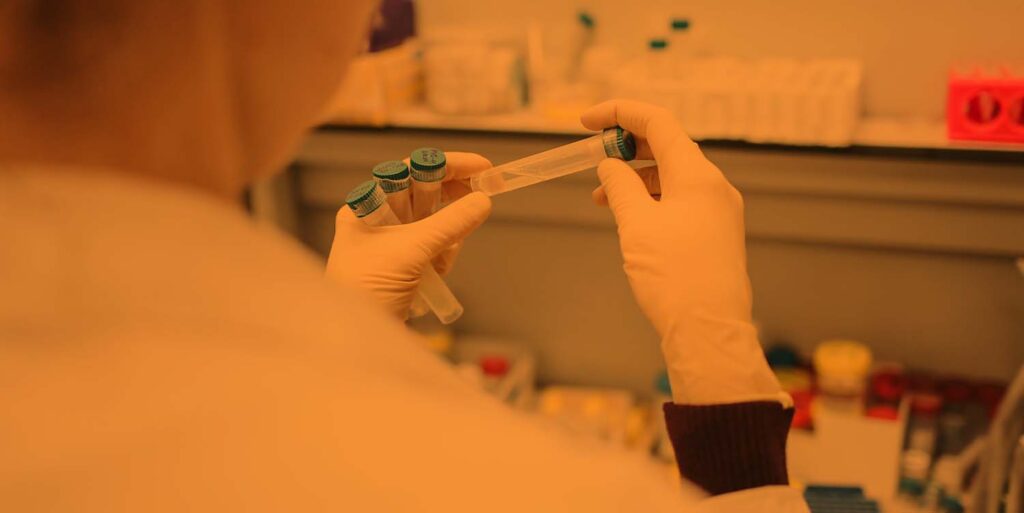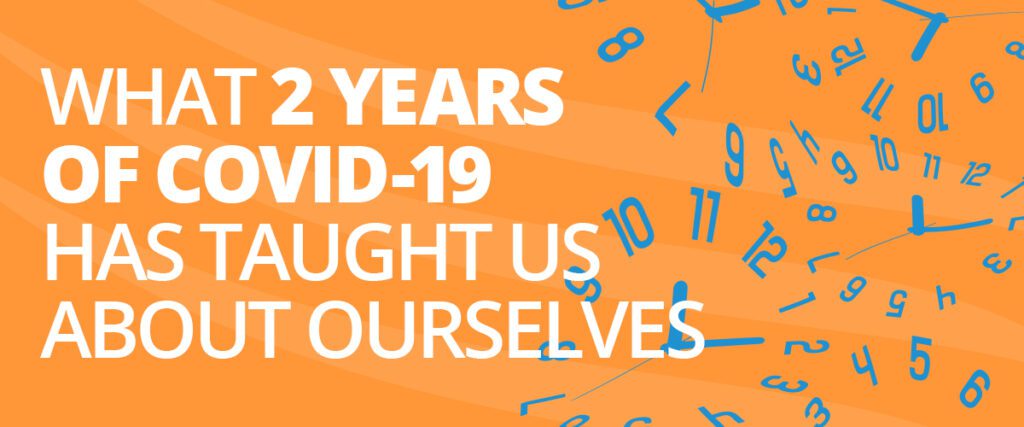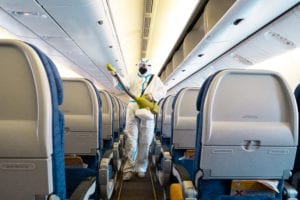By Gary Frazier
After two years of COVID-19, I’m reminded of a famous saying from Sun Tzu’s classic The Art of War: “Know thy enemy and know yourself; in a hundred battles, you will never be defeated.”
Scientists, researchers and world leaders have worked hard for more than two years to learn as much as possible about the respiratory virus officially known as SARS-CoV-2. We’ve learned more about its virology every day since even before the World Health Organization first declared it a pandemic. Meanwhile, dedicated testing from Worksite Labs and other providers has helped track its global movement. These combined efforts continue to bring us ever closer to pre-pandemic “normal.”
We’ve come to know our enemy quite well — certainly far better than we did during early lockdown. But what about the second half of Sun Tzu’s mantra? What about knowing ourselves?
The last two years of pandemic life have taught us more about the human experience than we could’ve expected. They’ve clarified our weaknesses, strengths, desires — and, overall, what it takes to keep our world moving.
Here are a few things COVID-19 has taught us about ourselves since March 2020.
Travel comes naturally to us.

For many, the impact COVID-19 had on travel was an early sign that the pandemic was a serious problem. Airports, cruise ports and hotels emptied virtually overnight. An industry that generated more than 10% of the worldwide gross domestic product in 2019 was indefinitely hamstrung.
So why do 70% of travelers plan to spend more on trips in 2022 than they have in the last five years? Why do more than one-third of Americans intend to venture outside the country this year, even when new coronavirus variants almost always originate overseas?
It’s simple: Travel comes naturally to us. It’s been built into our DNA throughout history, and its various emotional health benefits keep us coming back for more. Psychologists say even brief travel can reduce stress, increase creativity and even grow our empathy for others.
And because the pandemic has so heavily curbed travel, vacationers are eager to make up for lost time. That’s why Expedia dubbed 2022 the year of the “GOAT” (greatest of all trips) mindset. When you can finally enjoy something again that you’ve lacked for so long, “going big” is the best way to do it.
Classroom-based education is the best option for many.

Parents remember how worried they felt when K-12 schools “temporarily” closed their doors in March 2020. We had no idea a couple weeks off classes — part of an effort to “flatten the curve,” if you recall — would turn into 18 months of virtual or hybrid learning.
While many children can excel in well-established online learning environments, school experts say in-person education is ideal for most. Students need peer-to-peer interaction to develop properly on multiple levels, and a learning environment away from home introduces fewer distractions.
More than half of U.S. K-12 teachers said their students had experienced significant learning loss in the pandemic’s first year. Low-income households and students of color suffered disproportionately because they were more likely to have internet connectivity issues. And social-emotional health was notably lower when learning from home, especially for high schoolers.
The impacts of virtual education are just as significant for college students. Young adults are especially prone to issues with mental health and concentration when they can’t visit campus in person. They also miss out on opportunities to build community and develop their own sense of identity and independence at a pivotal moment. In addition, college students who learn remotely tend to score lower on core tests than in-person students.
In-person work fuels our world — in multiple ways.

COVID-19 was the first time many of us realized just how critical essential workers are to our economy.
Restaurants, manufacturing, ground transportation, oil and gas extraction and other manual services took a major hit in 2020. Millions of workers lost their jobs; everyday services ceased, disrupting our established routines; the economy shrank alarmingly.
Many products and services we often take for granted require (or at least benefit from) in-person labor. And even for the large number of Americans who can telework, visiting the office has its benefits. It makes it easier to collaborate with coworkers and become integrated with your company’s culture — especially if you’re new there.
Large events draw us together.

Just like our intrinsic desire to travel, we naturally yearn to connect with other people. And large gatherings, such as concerts, festivals, conferences and sporting events, are among the best ways to foster shared experiences.
Events with high head counts ceased when the pandemic began, and many of us felt the void instantly. On top of being fun, large gatherings offer you several social-emotional benefits. They fortify your sense of identity, add variety to your daily routine and forge connections between you and other attendees.
It’s no wonder large, in-person events are on pace to make a strong return. Pro football drew more spectators last season than in 2019, concluding with a packed Super Bowl. Concert promoter Live Nation is projected to top its 2019 revenue this year and next year.
In-person business gatherings are also expected to have a healthy comeback. Event professionals believe they’ll return to pre-pandemic numbers within the next year or two. And more than 80% of scheduled business meetings and events in 2022 are slated to include an in-person element.
We can’t predict what the coronavirus will do next.

We know far more about COVID-19 than we did in early 2020. But two years in, it still leaves us guessing.
By summer 2021, more than 100 million Americans had been fully vaccinated against COVID-19, and it felt like “normal” was finally within reach. Then, the delta variant arrived stateside and became the dominant U.S. strain seemingly overnight. New cases surged in the fall, and before we knew it, mask mandates and other health mitigation measures had returned.
History repeated itself only a few months later when the omicron variant emerged. This strain spread even more quickly, shattering case-count and hospitalization records. Major businesses and thousands of schools quickly reverted to virtual models.
That surge faded quickly, as the nation returned to a five-figure daily case average in late February. Now, mere weeks after the U.S. topped 800,000 cases in one day, nearly one-third of Americans consider the pandemic mostly or totally under control.
Our world is jumping at the opportunity to open back up, despite the proven resilience of this coronavirus. Many public schools have eased mask mandates, and major cities and even entire countries have rolled back health mitigation measures.
Yes, our knowledge of the virus has improved vastly since 2020. But our response to the pandemic has hardly improved at all. Our chief question remains, “How quickly can we move past the inconveniences of COVID-19?” We’re so eager to shed our masks and other encumbrances that we forget how easily the virus can catch us off guard. We forget that whenever the curve flattens, another spike follows soon after because we’ve let our guard down.
Instead, our main question should be, “How can we get back to normal safely while the coronavirus is still out there?”
Quality COVID-19 testing is essential to keep us moving.

With a virus that always seems one step ahead, testing keeps us proactive and prepared to tackle future surprises. It’s the only way to safely resume work, school, travel and large events as we loosen our grip on other safeguards.
Pre-travel testing is the only way to identify infections around the world and the first line of defense against international spread. It’s our commonsense method to slow the transmission of new variants so they don’t deal the same damage as delta and omicron.
School-based testing is more necessary than ever to sustain in-person learning, especially when new variants emerge. Testing often at regular intervals keeps students and staff always aware of their health status. It also helps administrators identify infections as they happen and react before broader outbreaks develop.
Regular testing also helps prevent future outbreaks that could hamper workplace productivity. And large-event planners who provide testing opportunities help keep attendees safe and comfortable returning to crowded venues.
Worksite Labs provides testing for all these purposes and more. We’ve helped travelers, students, workers, employers and other everyday people get closer to the “normal” we’ve all been pining for, helping overcome inequities and make quality testing accessible for everyone.
And whatever your normal looks like, we’re here to help you get back to it, too. Contact us to take the first step.
Gary Frazier is CEO of Worksite Labs.




